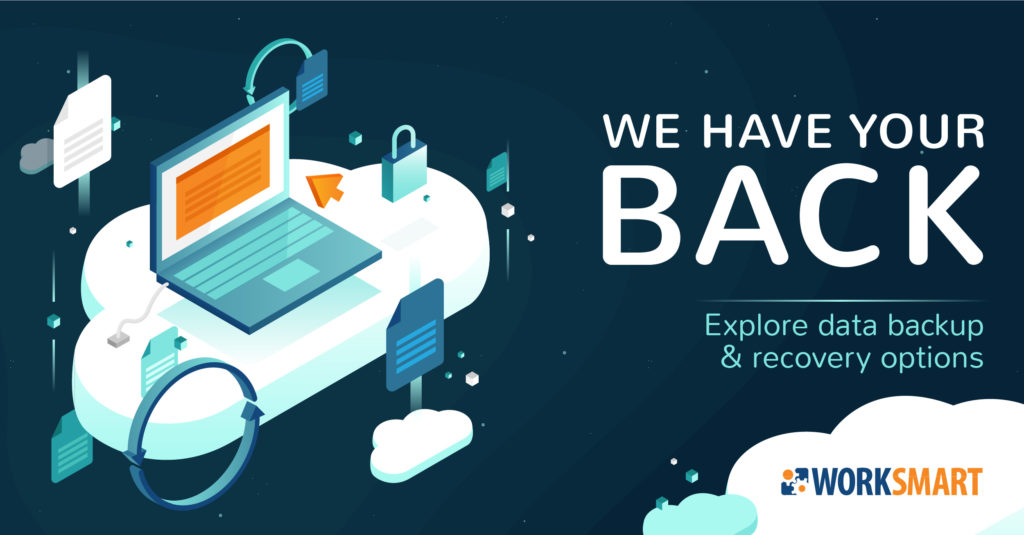April is all about spring cleaning. It’s the time of year when we want to clear out clutter and make room for new ideas and fresh starts. That includes deleting old folders or files you don’t need anymore… until later on when you realize you need those files. Now what?
This month, we’re kicking off a new focus on data backup and disaster recovery. Spring is a great time to review your organization’s plan for business continuity and disaster recovery. To start, we’re explaining the two biggest metrics you need to consider before deciding on the right backup services.
RECOVERY TIME OBJECTIVE (RTO)
RTO is the maximum amount of time your organization can withstand a specific system being down. You can decide that your business can handle email being down for 12 hours, and operating systems can be down for 4 hours, etc. It can vary for each application. And it’s important to be as realistic as possible, as RTO impacts your investment in data backup systems.
RECOVERY POINT OBJECTIVE (RPO)
RPO is the maximum amount of data your organization can withstand losing from different systems, and it’s measured in hours. If you’re comfortable losing two hours of data from your customer relationship management (CRM) system, then you would set that system to back up every two hours. And if that CRM system fails sometime within those two hours, any data that was added after the backup would be lost. The RPO metric you apply to each system also determines the order in which your IT team restores systems after a failure event.
These decisions require some imagination—if your email system fails and employees start lining up outside your office, when will you promise they’ll be back up and running? How much will that downtime affect productivity, or even revenue? Your answers can help inform the right level of backup and recovery tools and business continuity plans you need to employ today to manage risk appropriately.
BUSINESS CONTINUITY PLAN
Have you thought about your business continuity plan lately? Business Continuity planning starts with defining the potential risks to your business and how they could affect operations. Then we determine which tools, services and processes we can use to mitigate risks and restore business function within your organization’s RTO and RPO. And we should regularly review and test the process to make sure it’s right, and works. We may find that a vendor who said they can respond within a certain amount of time is not actually able to follow through. You don’t want to find that out during a real disaster.
Before you start tossing last year’s files, take another look at your data backup and recovery tools, consider your RTO and RPO, and dust off the ol’ business continuity plan and test the engine. Of course, if your company policy requires you to save all data, WorkSmart can manage your data archiving needs. And you can check out our data backup and recovery tools overview pdf here.


